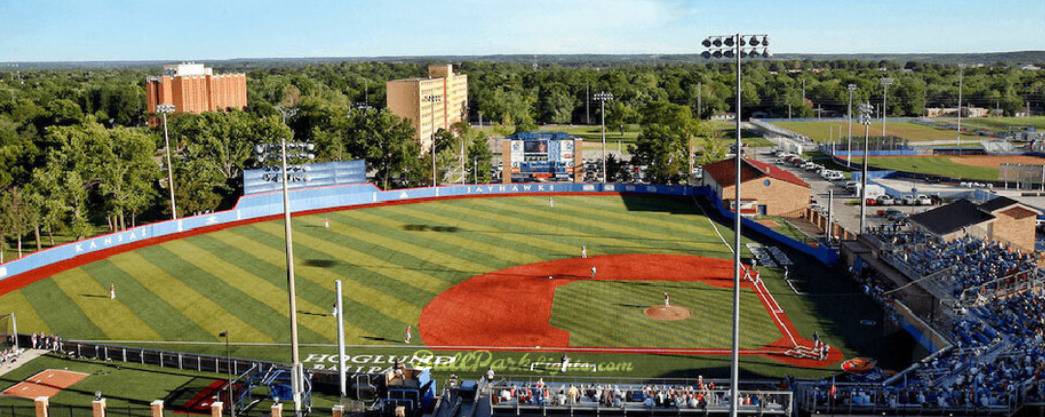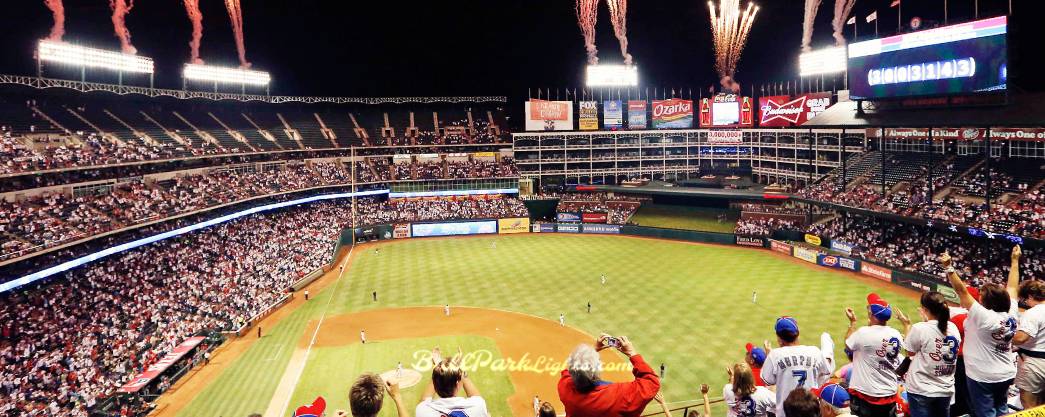What if those lights flickered or cast uneven shadows across the diamond? The magic of the game would falter, making it difficult for players to track the ball and for fans to fully enjoy the action. Whether you’re a player aiming for that home run or a fan cheering from the stands, the quality of lighting can make all the difference.
Message us to get a free lighting design solution
Achieving optimal lighting uniformity on baseball fields enhances both player performance and spectator experience. Properly designed lighting systems not only illuminate the field but also ensure that light is evenly distributed across all areas. This aspect of sports lighting plays a vital role in creating a safe and enjoyable environment for players and fans alike.

Table of Contents
ToggleLighting uniformity refers to the even distribution of light across a given area. In the context of a baseball field, it involves maintaining consistent illumination levels, which can be quantified through various metrics. One of the most commonly used measures is the uniformity ratio, which is calculated by dividing the average illuminance level by the minimum illuminance level. A ratio of 2:1 is often considered an acceptable standard for baseball fields, although higher ratios can enhance visibility and overall conditions.
Illuminance is typically measured in foot-candles or lux, which represent the amount of light received on a surface area. For baseball fields, achieving a minimum of 50 foot-candles is generally recommended for amateur play, while professional leagues may require upwards of 100 foot-candles or more. Ensuring that the lighting meets these benchmarks across the entire field allows players to track the ball effectively, reducing the chances of mishaps during play.
Several factors influence the uniformity of lighting on a baseball field. Fixture placement is perhaps the most critical element, as the arrangement of light poles and fixtures can create areas of brightness and darkness if not optimized. A well-designed layout typically includes fixtures positioned at strategic heights and angles to ensure that light reaches all corners of the field.
The type of lighting technology also impacts uniformity. Traditional incandescent and halogen lamps have largely been replaced by modern options, such as LED and metal halide lighting systems, which provide more consistent illumination. These technologies are not only more energy-efficient but also offer better color rendering and longer lifespans, which can contribute to a more uniform lighting experience.
Field dimensions and layout further complicate the challenge of achieving uniformity. Different levels of play, from Little League to Major League Baseball, feature varying field sizes and configurations, necessitating tailored lighting solutions for each. Understanding these specifications allows for more effective designs that meet the specific needs of each field and level of play.
Several challenges arise when attempting to create uniform lighting on baseball fields. One major issue is glare, which can distract players and hinder their ability to see the ball. Glare often occurs when lights are improperly positioned or when the brightness is excessive, creating uncomfortable conditions for athletes. To mitigate glare, lighting designers must carefully consider fixture placement and brightness levels, ensuring that the light does not shine directly into the players’ eyes.
Shadows represent another significant challenge in achieving uniform lighting. Shadows can obscure portions of the field, creating visual obstacles for players trying to catch or hit the ball. The interplay between light sources and surrounding structures, such as trees and buildings, can exacerbate shadow issues. Properly angling fixtures and ensuring adequate coverage can help minimize shadow interference, allowing for better visibility throughout the game.
Light pollution is another concern, particularly for fields located near residential areas. Excessive artificial lighting can disrupt local ecosystems and negatively impact the quality of life for nearby residents. To address this issue, lighting designers can implement shielding techniques and select fixtures that direct light downward, reducing the amount of stray light that escapes into surrounding areas.
Budget constraints often hinder efforts to achieve uniform lighting as well. High-quality lighting systems can be expensive to install and maintain, leading some facilities to opt for lower-cost solutions that may not meet uniformity standards. Finding a balance between cost and performance requires careful planning and consideration of long-term benefits. Investing in quality lighting systems can lead to better performance and lower energy costs over time.
Technical limitations can also complicate the lighting design process. Site-specific challenges, such as the presence of trees, existing infrastructure, or space constraints, may necessitate creative solutions to ensure uniform lighting. Collaboration with lighting professionals can help identify these challenges early in the design phase, leading to better outcomes.
Uniform lighting on baseball fields offers a range of benefits for both players and spectators. For athletes, enhanced visibility is paramount. When the field is evenly illuminated, players can more easily track the ball and react to fast-paced plays. This improved visibility leads to a more enjoyable and competitive game, as players are less likely to make errors caused by poor lighting conditions.
The safety of players also improves with uniform lighting. Reducing shadows and glare minimizes the risk of accidents, allowing athletes to focus solely on the game. An evenly lit field provides a consistent backdrop that helps players maintain their concentration and reduces the likelihood of collisions or misjudgments while running or diving for the ball.
Spectators, too, benefit from uniform lighting. A well-lit field ensures that fans have a clear view of the action, enhancing their overall experience at the game. Whether attending in person or watching from home, viewers appreciate being able to see plays develop without distraction from uneven lighting. This clarity can contribute to higher attendance and greater community engagement in local baseball programs.
In addition to immediate advantages, uniform lighting can also lead to long-term cost savings. While the initial investment in high-quality lighting systems may be substantial, the energy efficiency of modern lighting technologies can reduce ongoing operational costs. LED systems, for example, consume significantly less energy than traditional options and often require less maintenance, resulting in lower total cost of ownership over time.
Proper lighting can extend the usability of baseball fields. Fields with adequate lighting can host games and practices later into the evening, increasing the opportunities for play. This added flexibility can be particularly beneficial for youth leagues and community programs that rely on shared facilities. By accommodating more events, organizations can foster a stronger sense of community and promote physical activity among participants.

Designing a lighting system for a baseball field involves numerous considerations to achieve optimal uniformity. The layout of light fixtures is one of the primary factors in this process. Lighting designers must carefully evaluate the height and angle of poles to maximize coverage while minimizing glare and shadows. A combination of high-mast and lower-mounted fixtures is often employed to achieve the desired balance.
Modern advancements in LED technology have revolutionized sports lighting, providing superior color rendering, energy efficiency, and longevity compared to traditional options. LED fixtures produce bright, uniform light that enhances visibility while reducing energy consumption, making them an increasingly popular choice for baseball fields at all levels.
Field dimensions and layout should inform the design of the lighting system. Each baseball field is unique, and understanding its specific requirements is vital. For example, a professional baseball field may require a different lighting arrangement than a Little League field, as the dimensions, spectator capacity, and level of play can vary significantly.
Collaboration with lighting design professionals can streamline the process of achieving uniform lighting. Experts can assess the field layout, consider surrounding factors such as trees or buildings, and recommend tailored solutions that meet the unique needs of each facility. By leveraging their expertise, organizations can avoid common pitfalls and ensure that the final lighting design maximizes visibility for players and fans alike.
Over time, fixtures may become misaligned or lose efficiency, leading to diminished performance. Conducting routine inspections can identify issues early, allowing for timely repairs and adjustments. Investing in ongoing maintenance can prolong the lifespan of the lighting system and preserve the quality of illumination over the long term.
The use of advanced lighting simulation tools can further enhance the design process. These tools allow designers to visualize how different fixture placements and technologies will perform in real-world conditions. By modeling various scenarios, designers can make informed decisions and fine-tune their approach to achieve the desired level of uniformity.
Ultimately, creating a well-lit baseball field requires a comprehensive understanding of the various factors involved in lighting design. By considering the unique characteristics of the field, selecting appropriate technologies, and collaborating with experts, organizations can achieve the ideal lighting conditions that promote safety, enhance performance, and improve the overall experience for players and spectators alike.
Through careful planning and thoughtful execution, the benefits of uniform lighting can extend far beyond the diamond, positively impacting the entire community. By investing in quality lighting, facilities not only improve game day experiences but also contribute to the long-term success and growth of baseball programs at all levels.
Incorporating best practices for lighting uniformity will lead to more than just brighter fields. It creates an environment where athletes can thrive, communities can gather, and the love of the game can flourish.
Investing in uniform lighting for baseball fields not only enhances the quality of play but also fosters a greater sense of community engagement. By ensuring that fields are evenly illuminated, organizations can create a safe and enjoyable environment where athletes can perform at their best, and spectators can fully immerse themselves in the game.
From reducing glare and shadows to optimizing fixture placement, the meticulous design and maintenance of lighting systems are integral to achieving this goal. Furthermore, modern technologies such as LED lighting not only provide energy efficiency and cost savings but also contribute to an overall improved aesthetic for the fields.
Ultimately, the commitment to achieving lighting uniformity goes beyond the technical aspects of design and installation. It reflects a dedication to the players, the fans, and the community as a whole. As baseball continues to thrive at various levels, the importance of quality lighting will remain a vital consideration, ensuring that the love of the game can be enjoyed by all, day or night.
BallParkLights.com All rights reserved